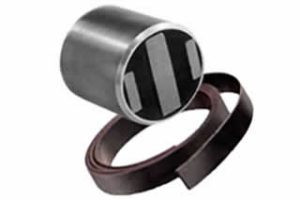
Magnets are used in a wide range of consumer and commercial applications. They are an essential component in speakers, microphones, motors, power generators, magnetic resonance imaging (MRI) machines, data storage devices and more. While all magnets produce a magnetic field, however, there are different types of magnets, such as samarium cobalt.
What Are Samarium Cobalt Magnets?
Samarium cobalt magnets are a type of rare-earth magnet. Also known as SmCo magnets, they are made of an alloy of samarium and cobalt. Samarium cobalt magnets often contain traces of other elements, such as copper and iron, but they consist mostly of the elements of their namesake: samarium and cobalt. Samarium is a rare-earth metal, which is why these magnets are known as “samarium cobalt magnets.”
All permanent magnets fall under one of two categories: ceramic or rare earth. Ceramic magnets are inexpensive and easy to produce, but they lack the magnetic strength of their rare-earth counterparts.
Ceramic magnets include the following:
- Ferrite
- Alnico
Rare-earth magnets include the following:
- Neodynium
- Samarium cobalt
Origins of Samarium Cobalt Magnets
The origins of samarium cobalt magnets can be traced back to the mid-1900s. They were originally developed in the 1960s. As previously mentioned, samarium cobalt magnets are made by mixing samarium and cobalt. The combination of these elements results in a super-strong permanent magnet. It wasn’t until several decades later in the 1980s that neodymium magnets were invented, making samarium cobalt the world’s first type of rare-earth magnet.
Properties of Samarium Cobalt Magnets
Samarium cobalt magnets are known for producing very strong magnetic fields. They have a BHmax of about 25 to 28. Ceramic magnets, in comparison, have a BHmax of about 3.5. Therefore, samarium cobalt magnets are roughly eight times stronger than ceramic magnets.
In addition to producing a strong and consistent magnetic field, samarium cobalt magnets are heat resistant. Heat, of course, is a concern for most magnets. When exposed to heat, magnets will typically become weaker. Heat causes the molecules in magnets to vibrate more quickly, which can adversely affect their alignment and, thus, their magnetic strength. But samarium cobalt magnets can withstand heat better than all other types of magnets, making them ideal for commercial applications where heat is problematic.
Samarium cobalt magnets are also resistant to oxidation. Oxidation occurs when elements or materials are exposed to oxygen. It causes them to gain oxygen molecules, resulting in corrosion and degradation. Fortunately, samarium cobalt magnets are highly resistant to oxidation.
In Conclusion
Samarium cobalt magnets are powerful, heat-resistant magnets consisting primarily of samarium and cobalt. Along with neodymium magnets, they are one of two types of rare-earth magnets.
